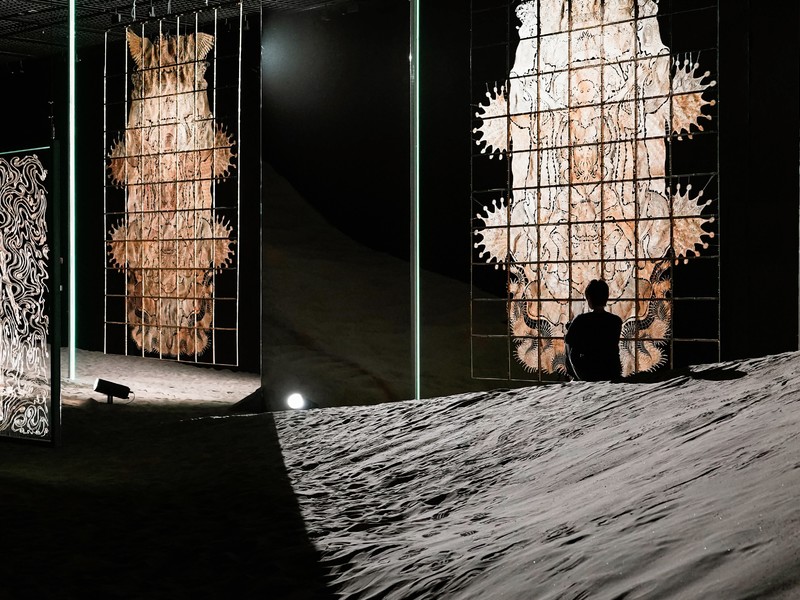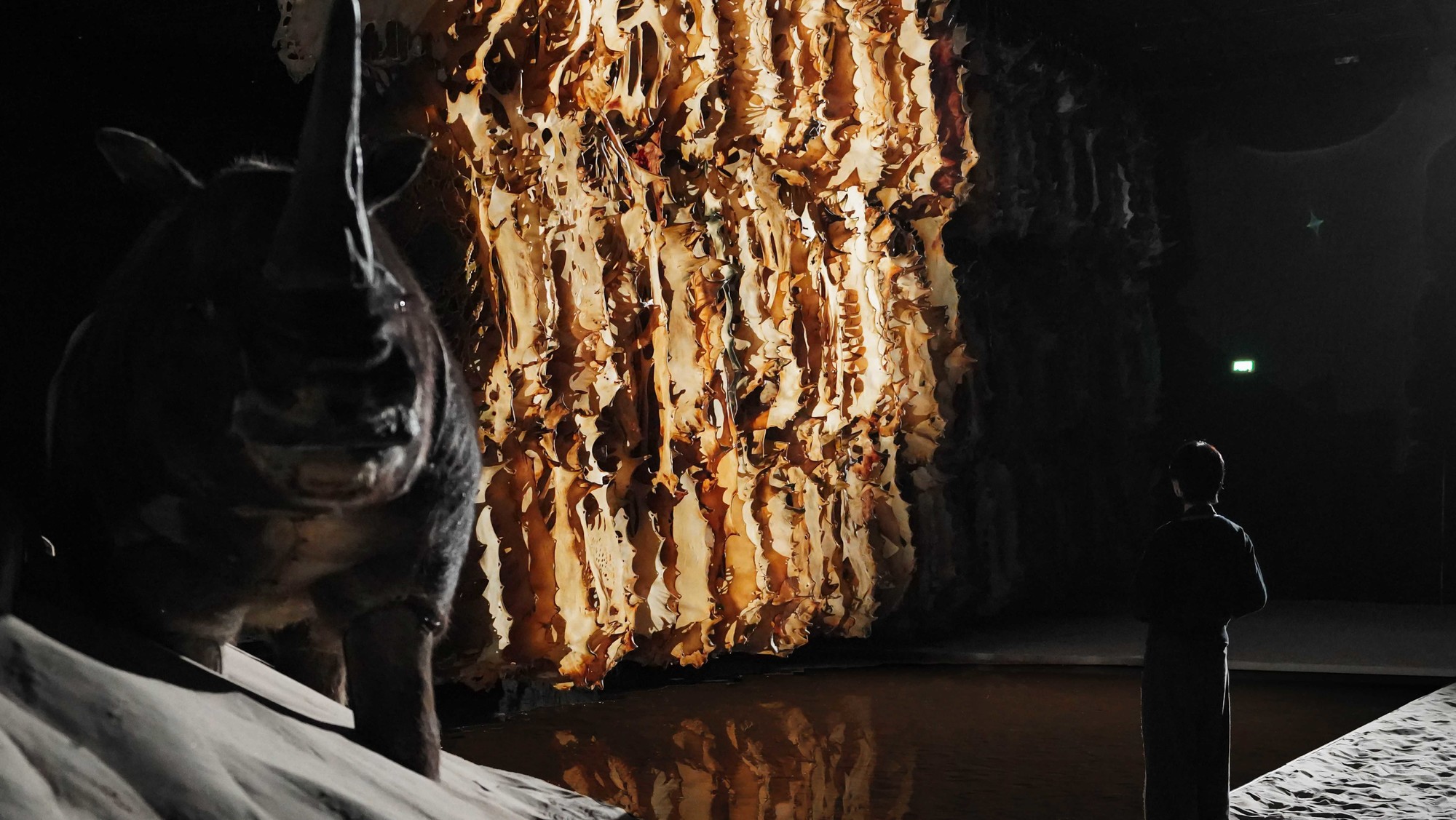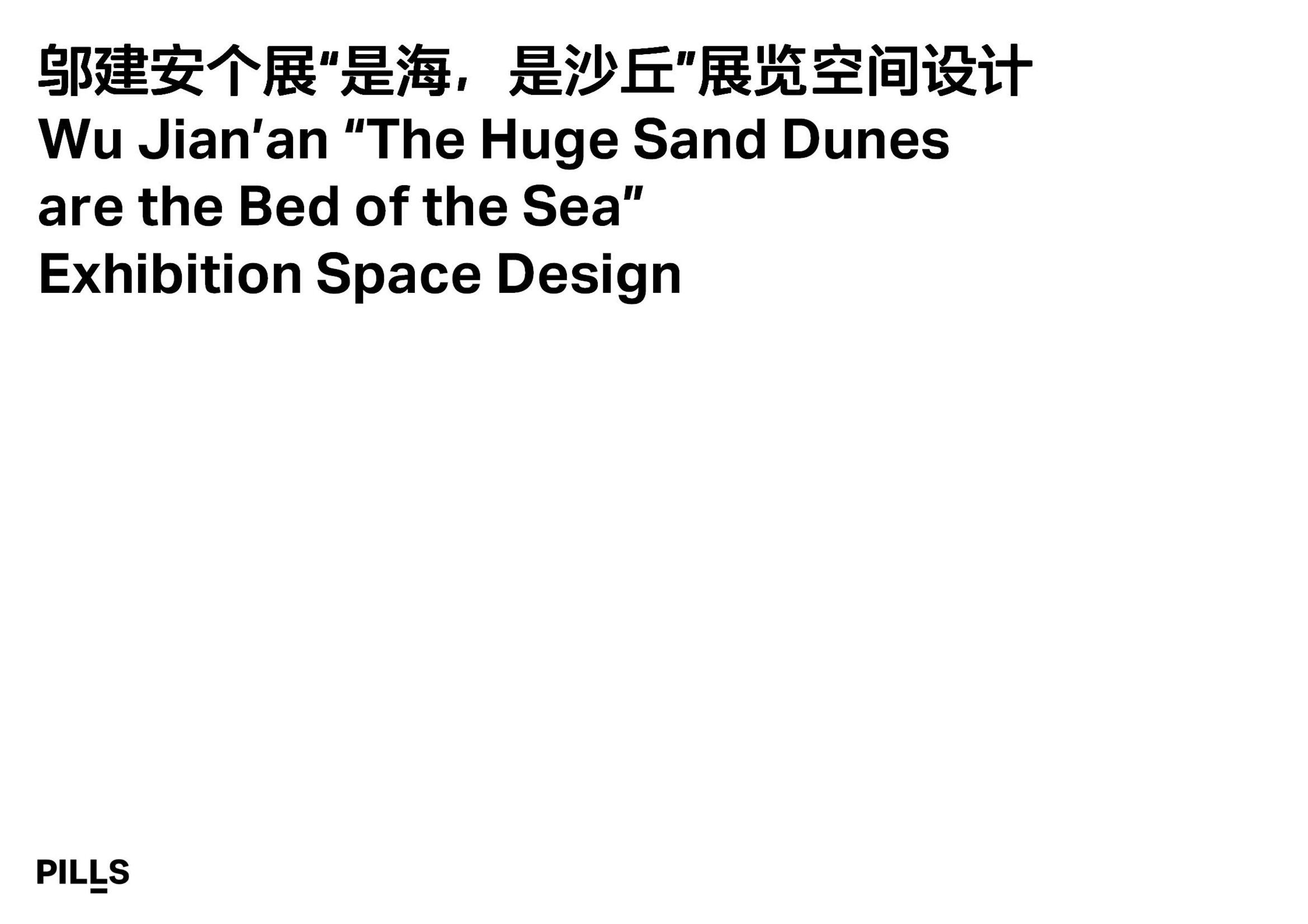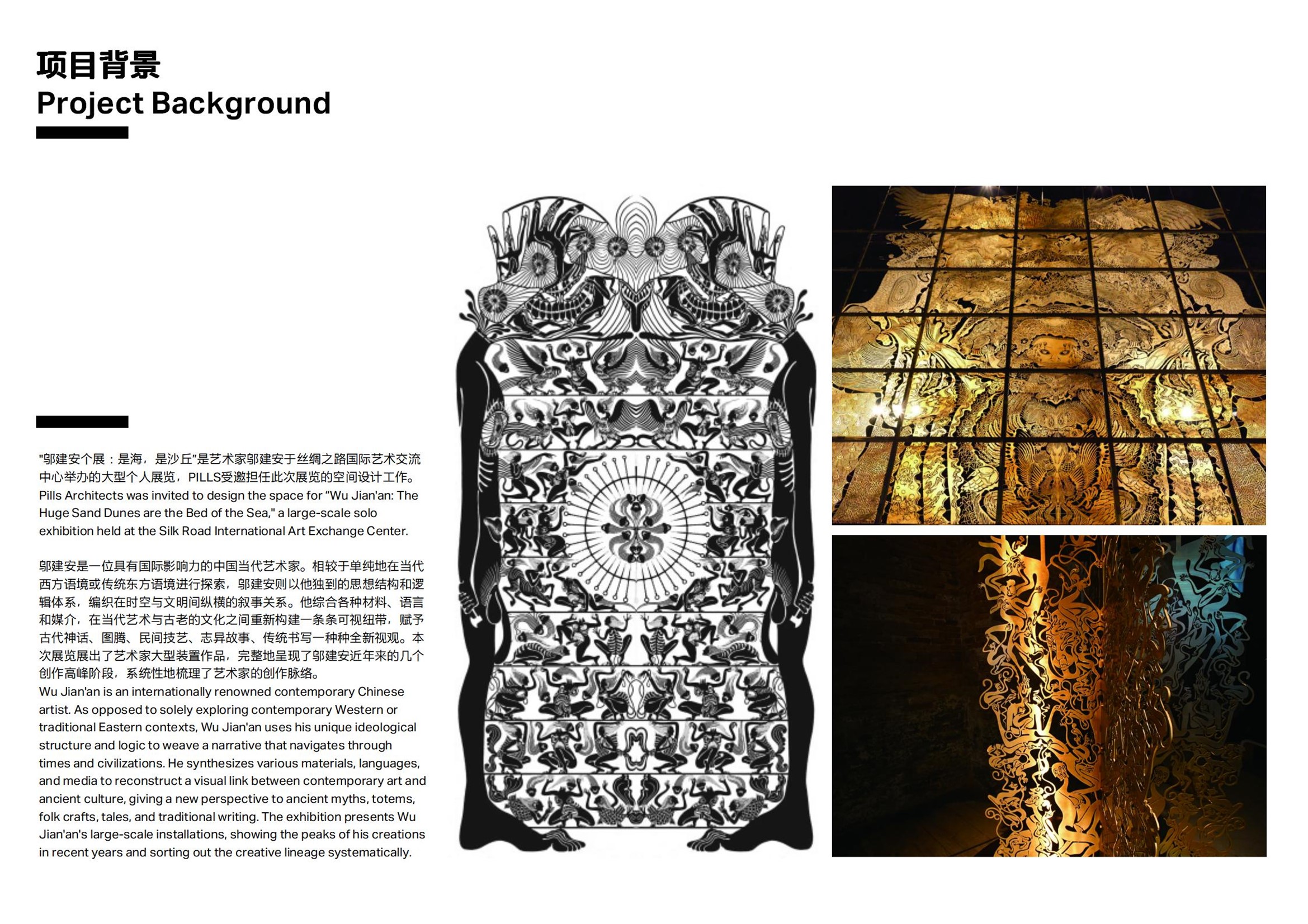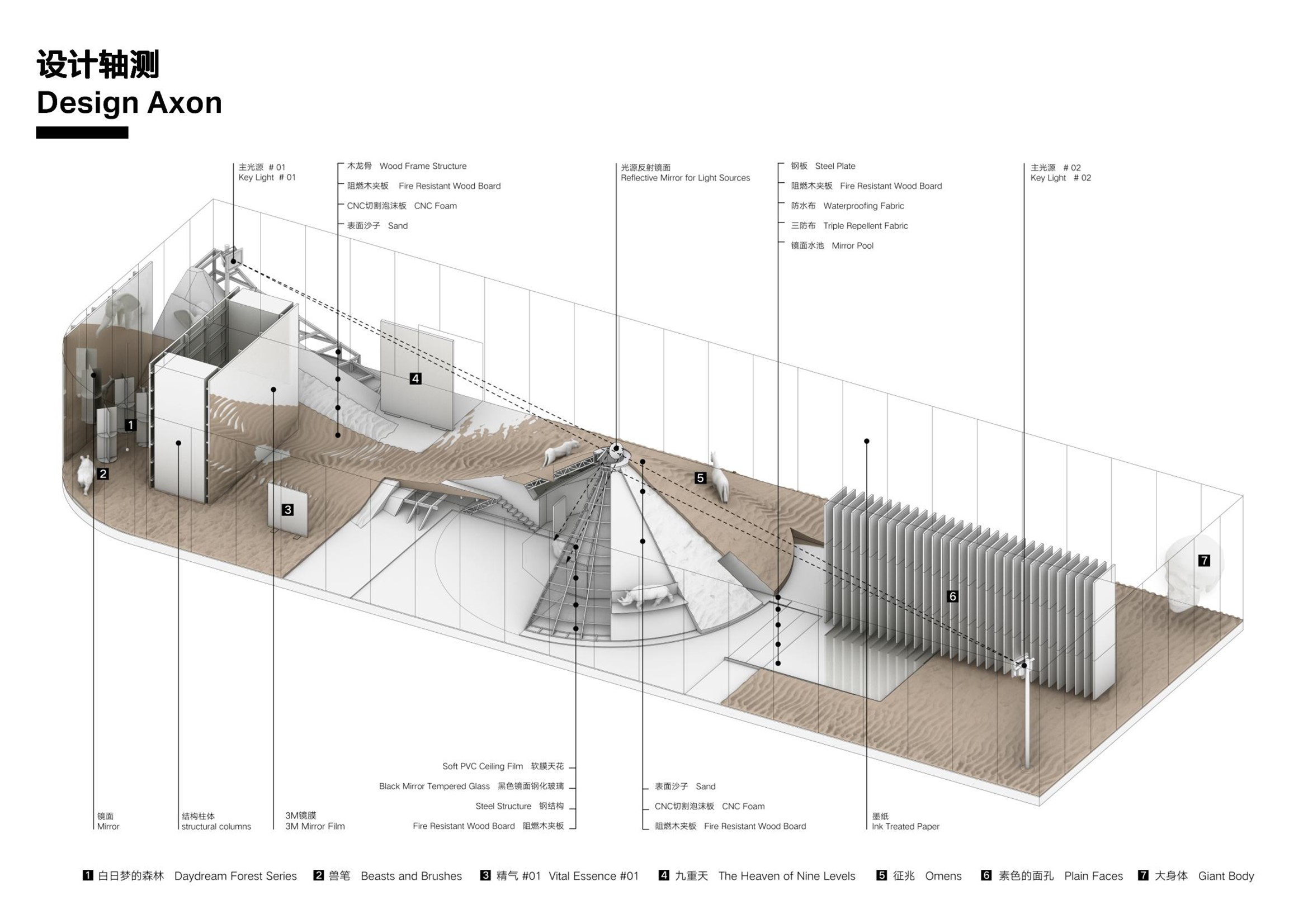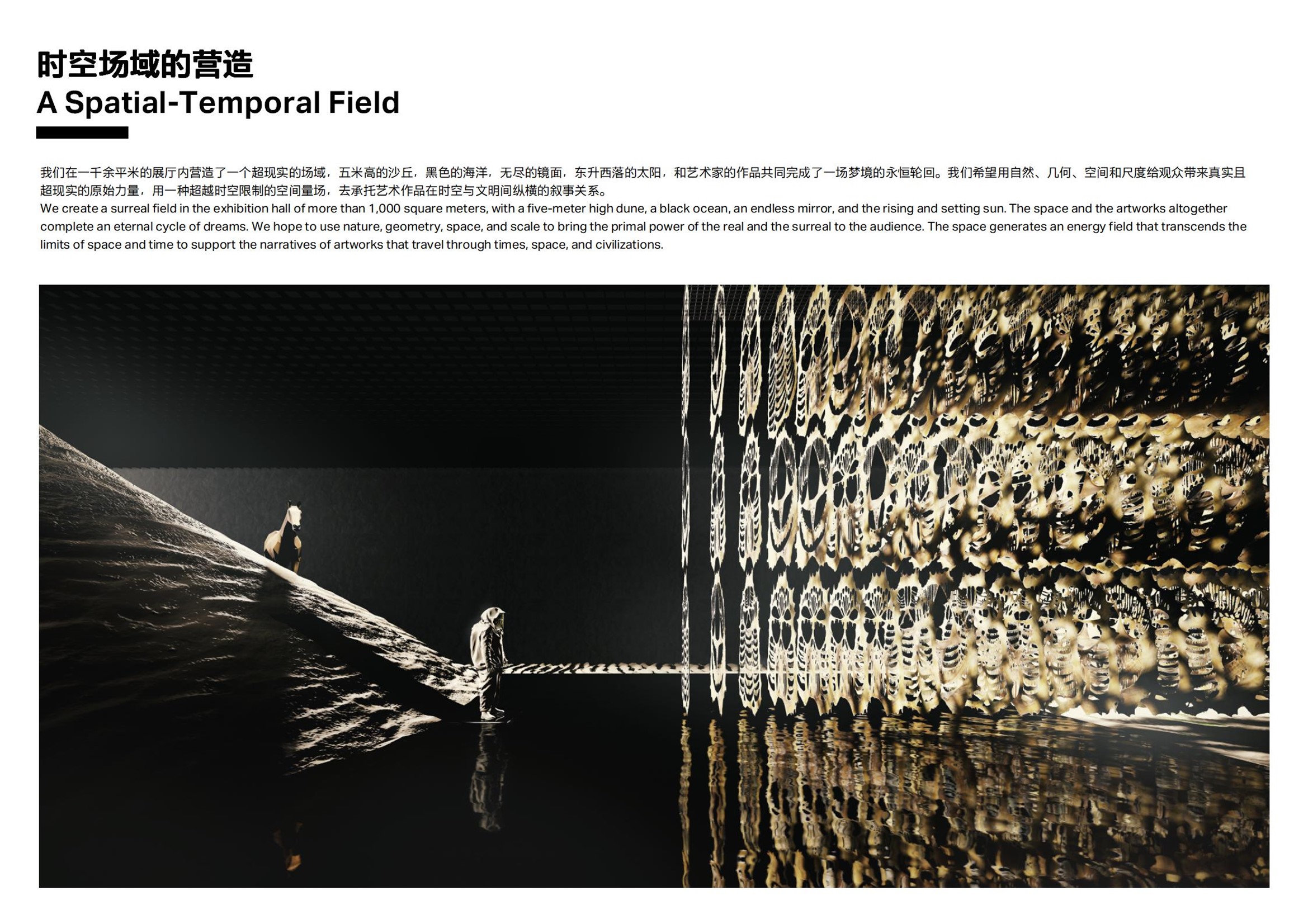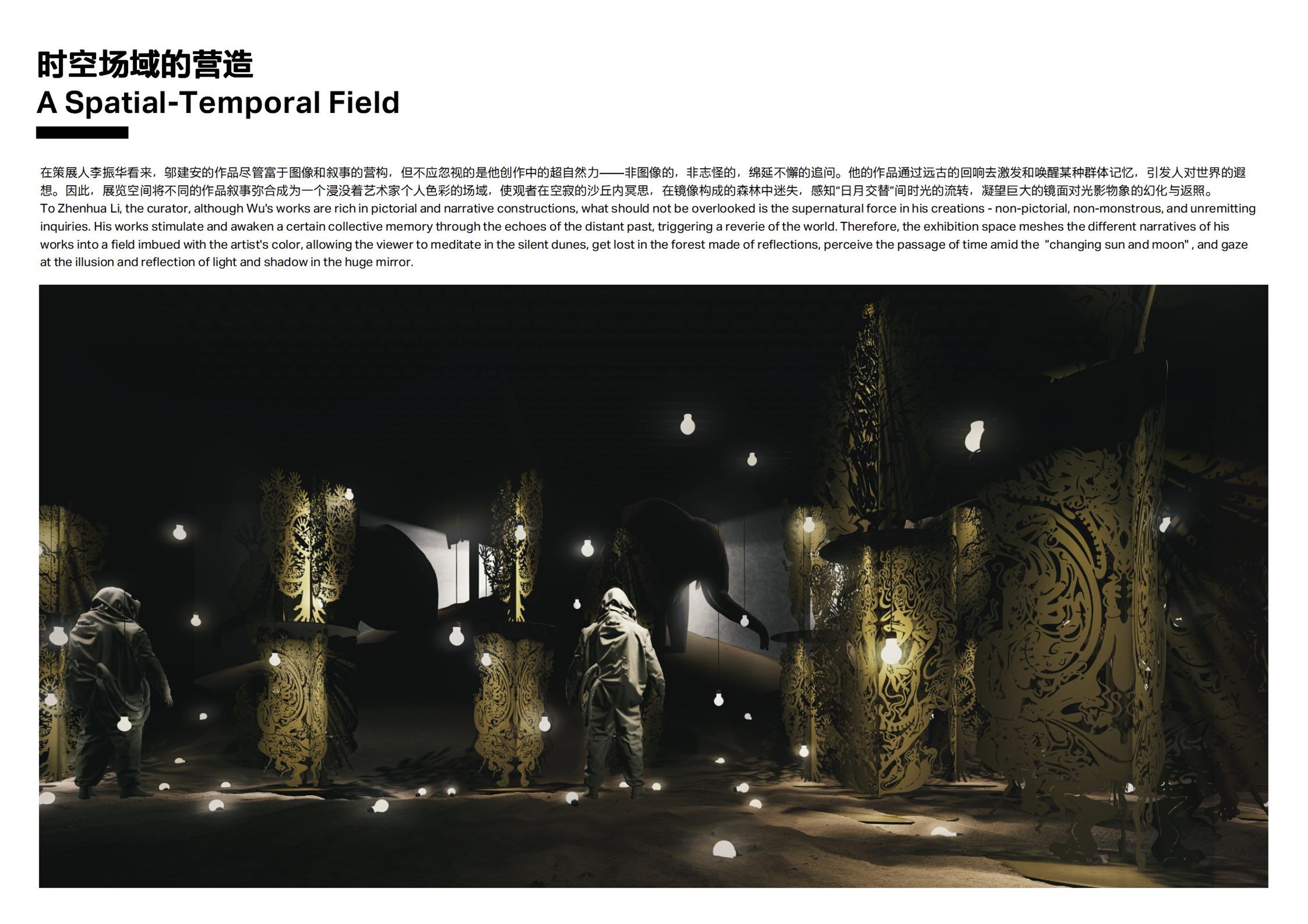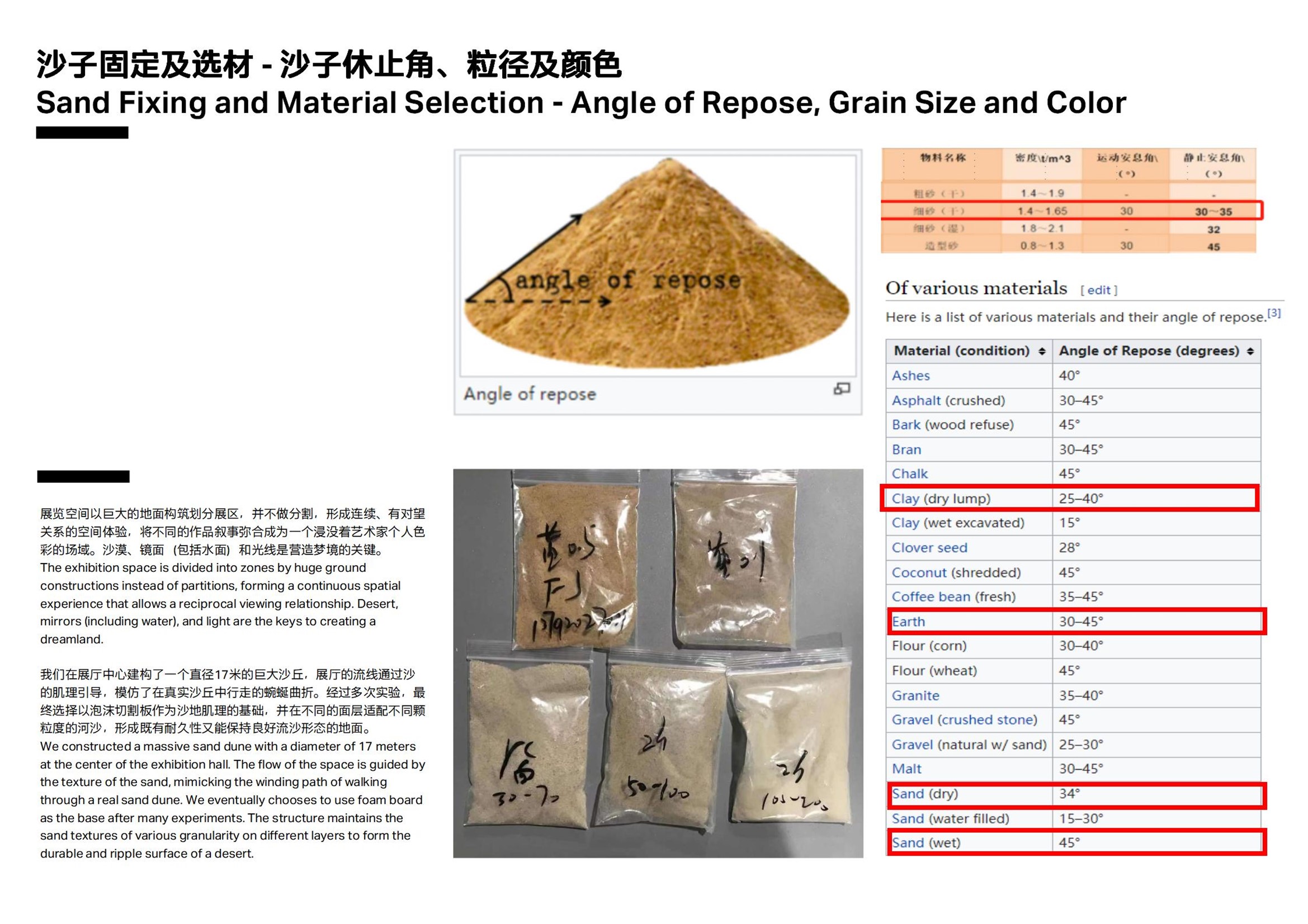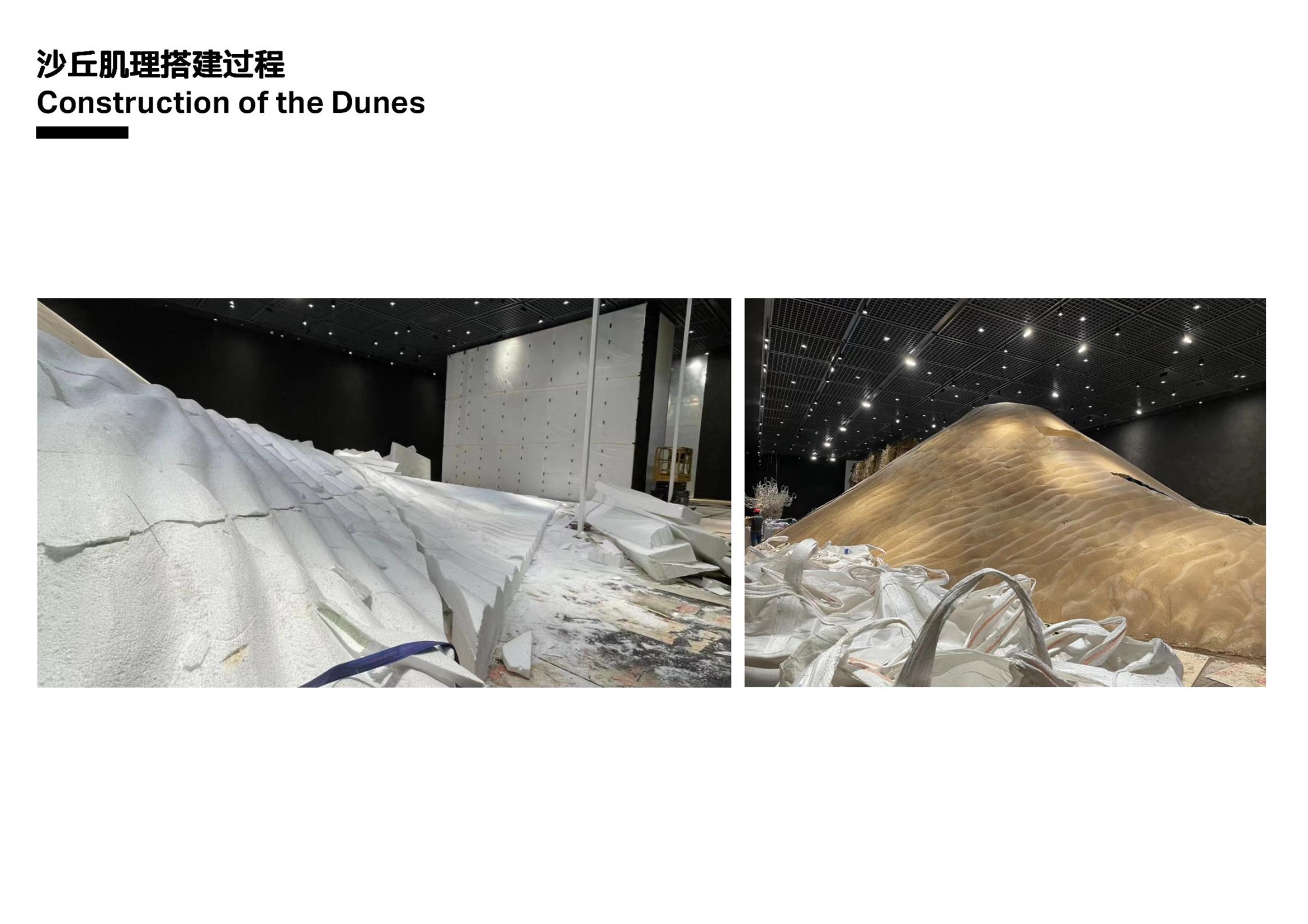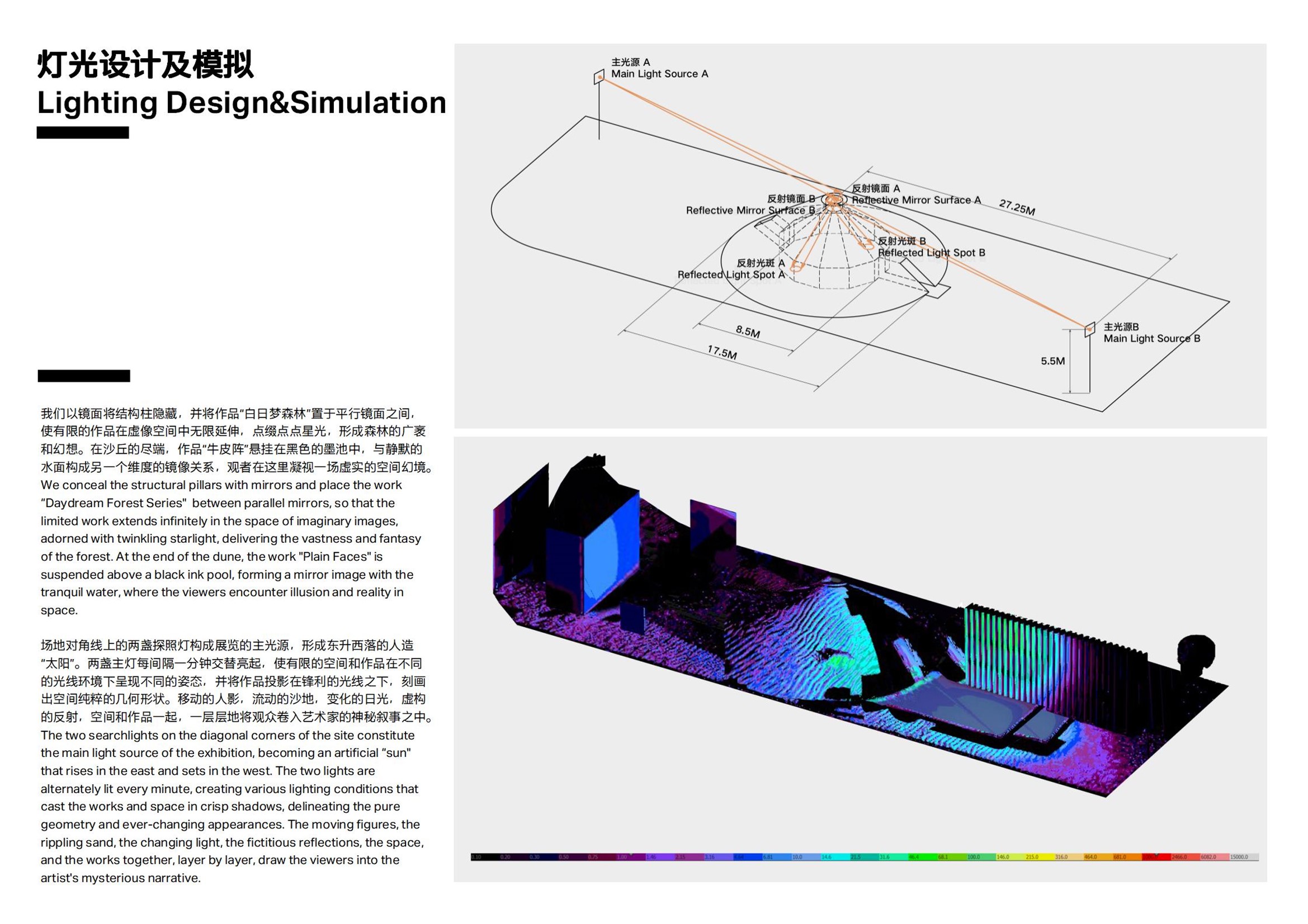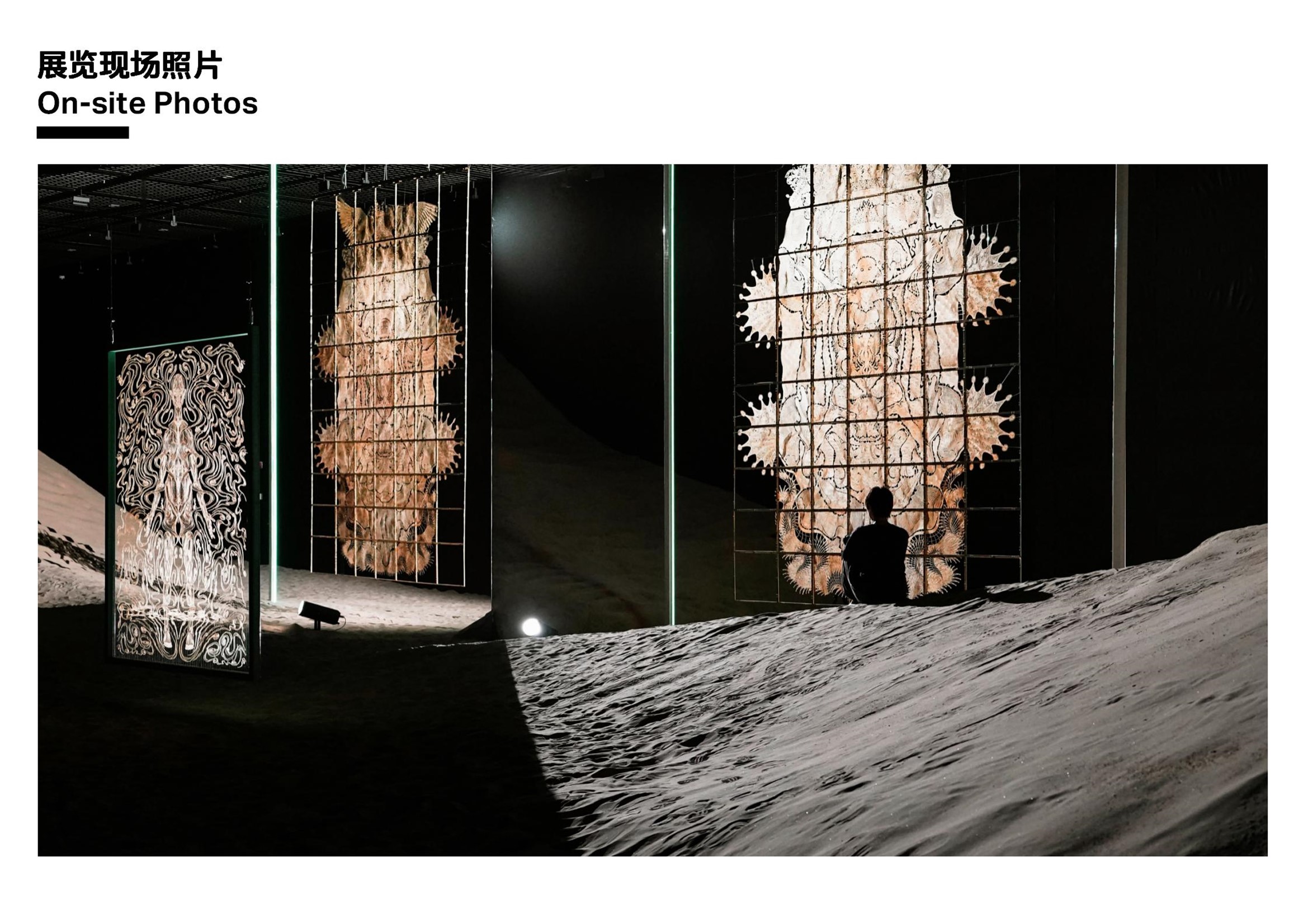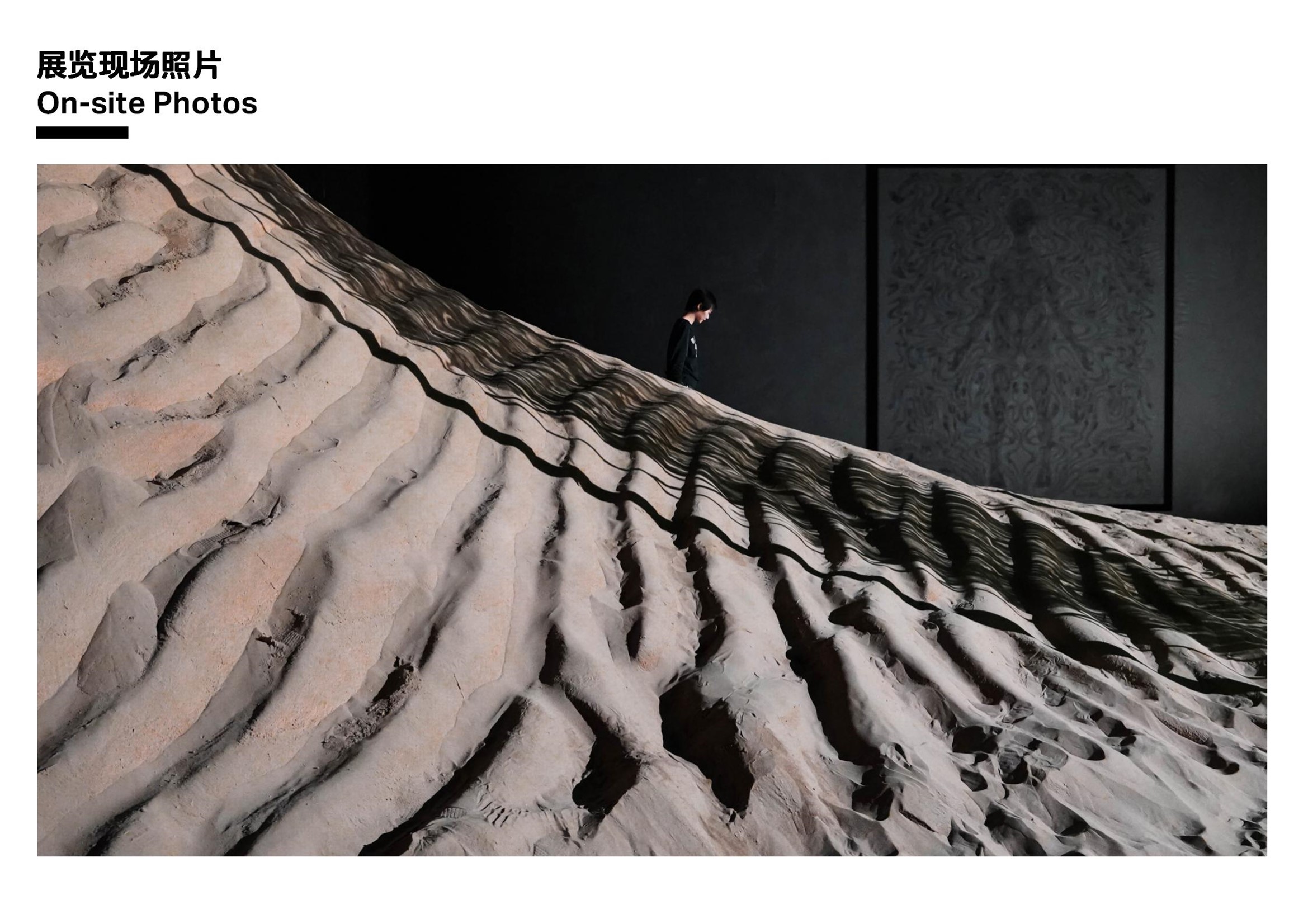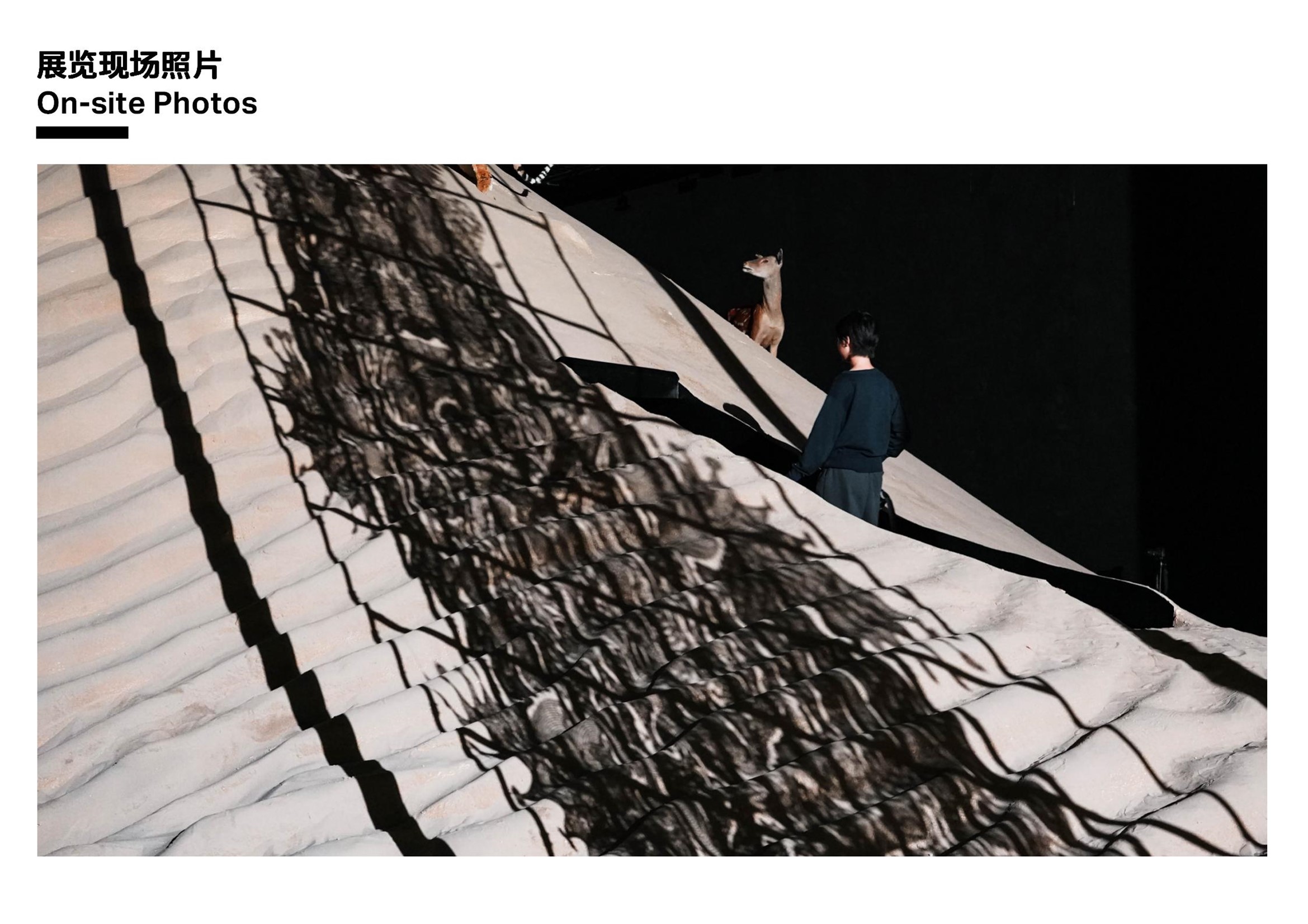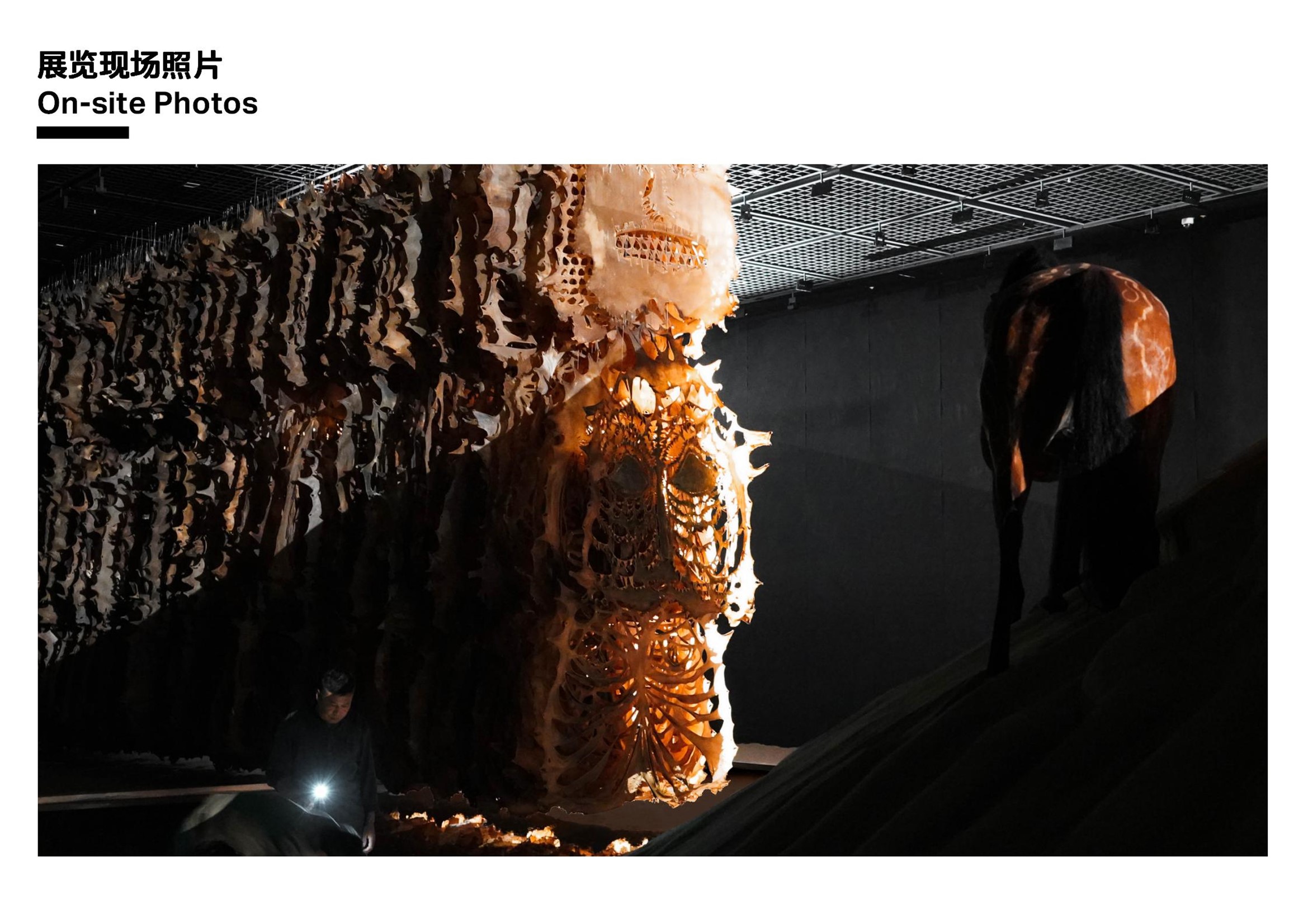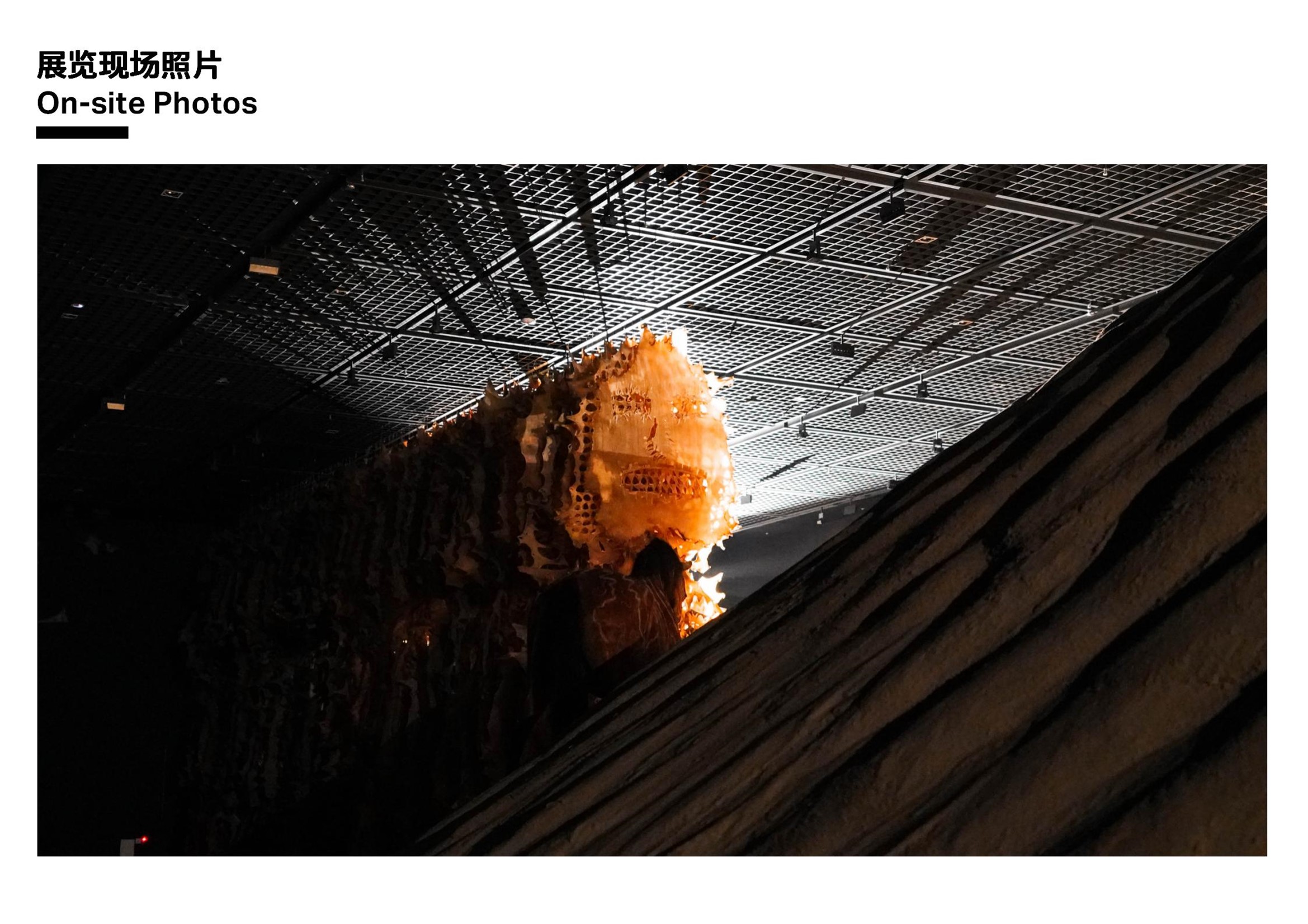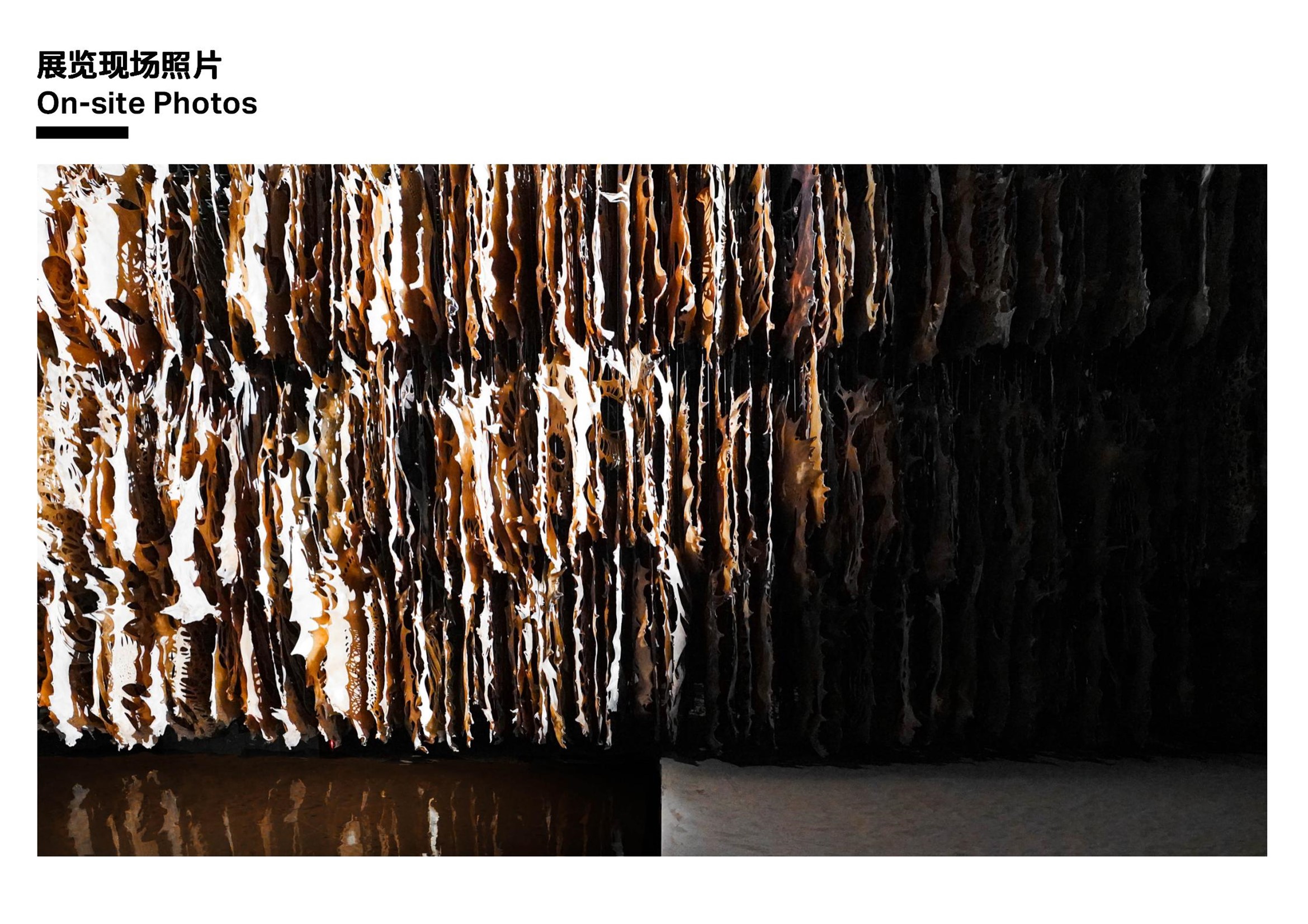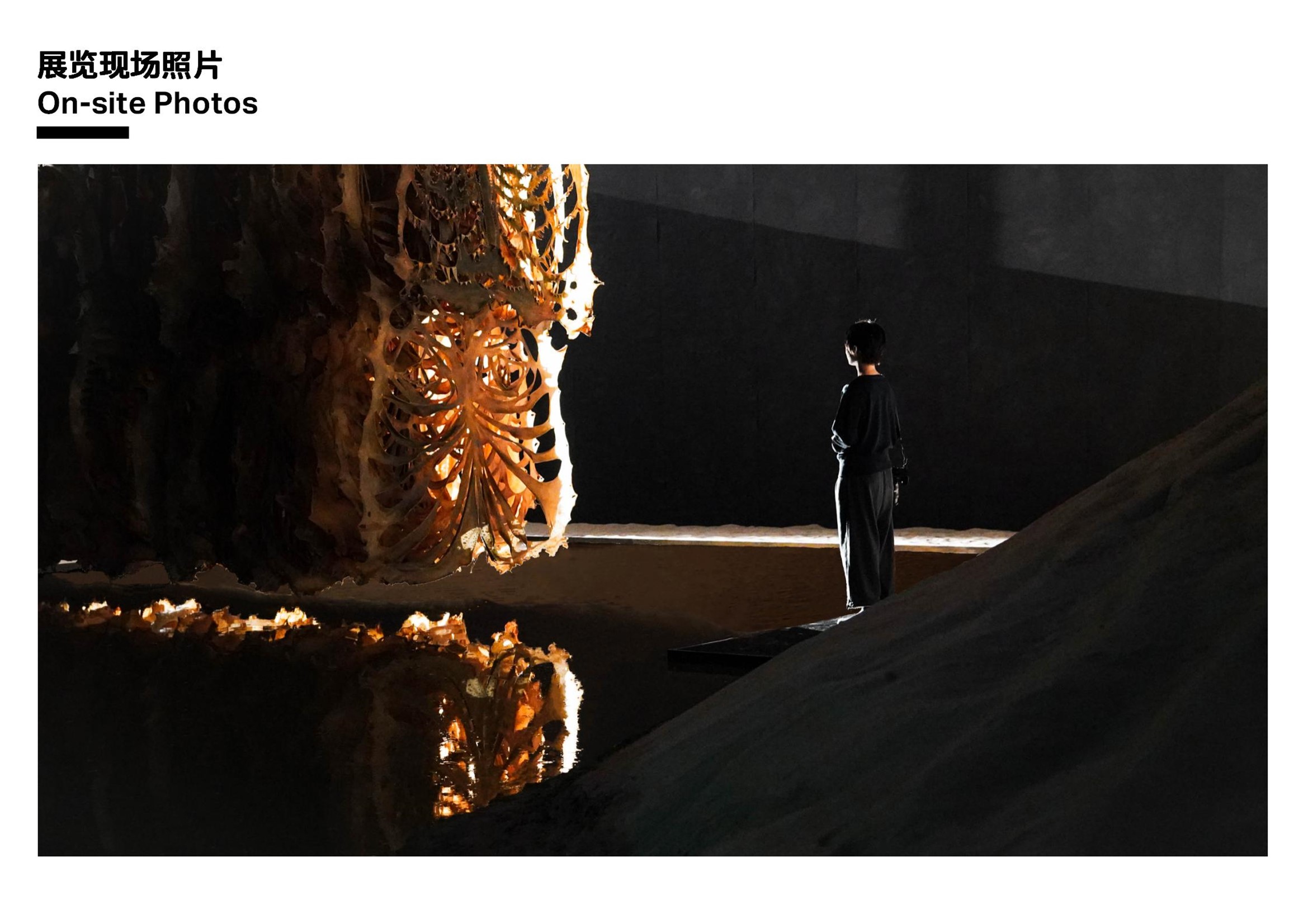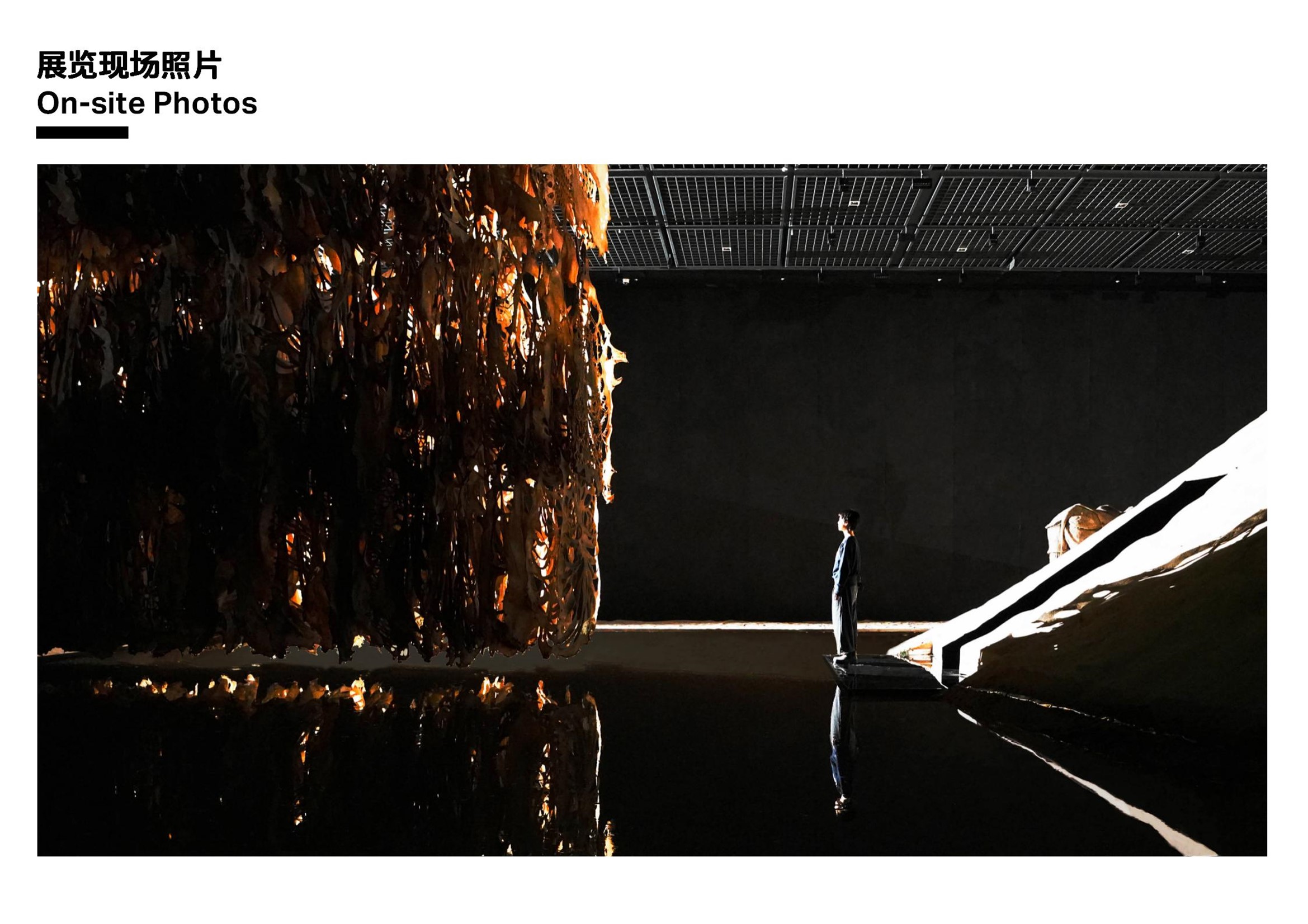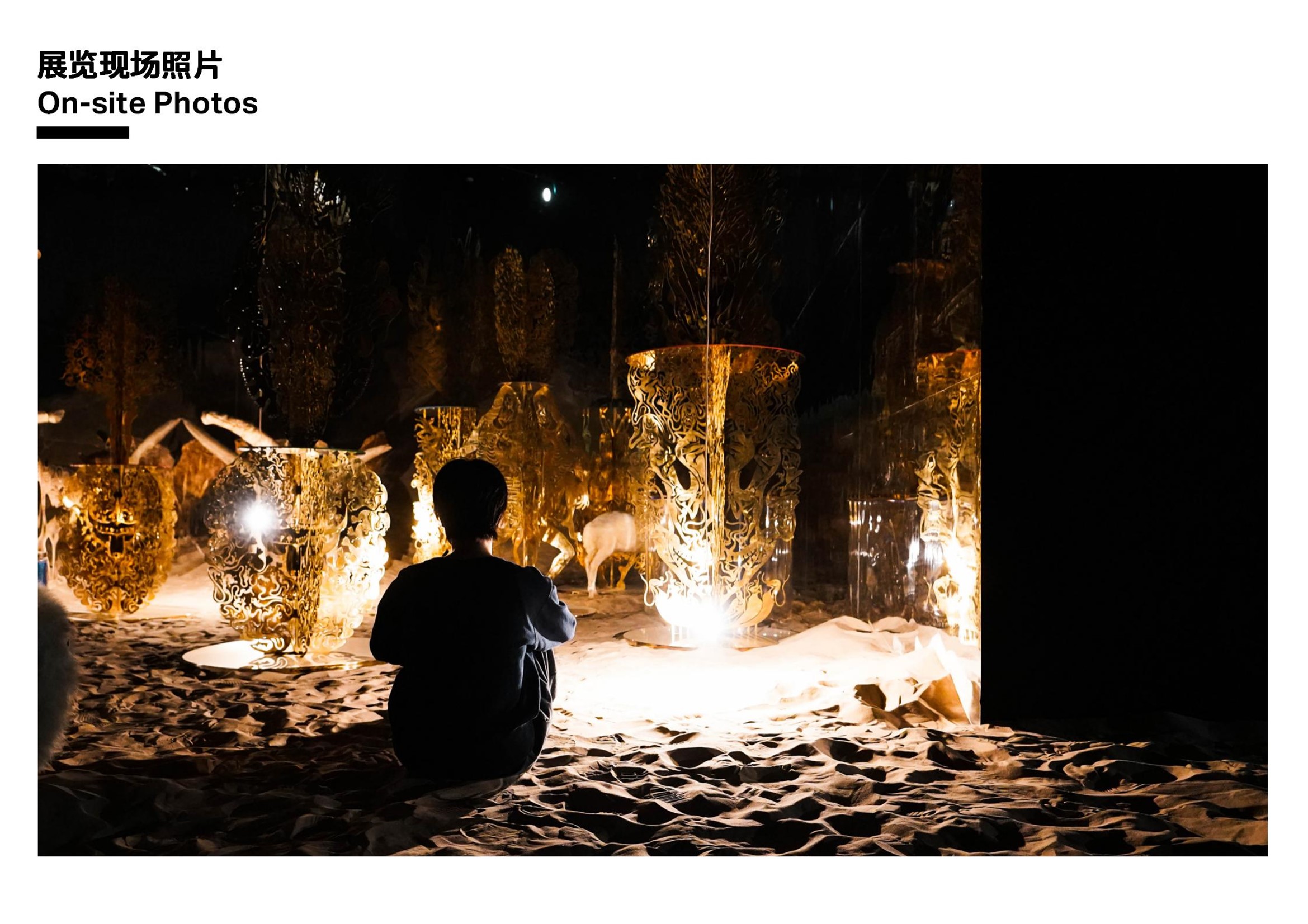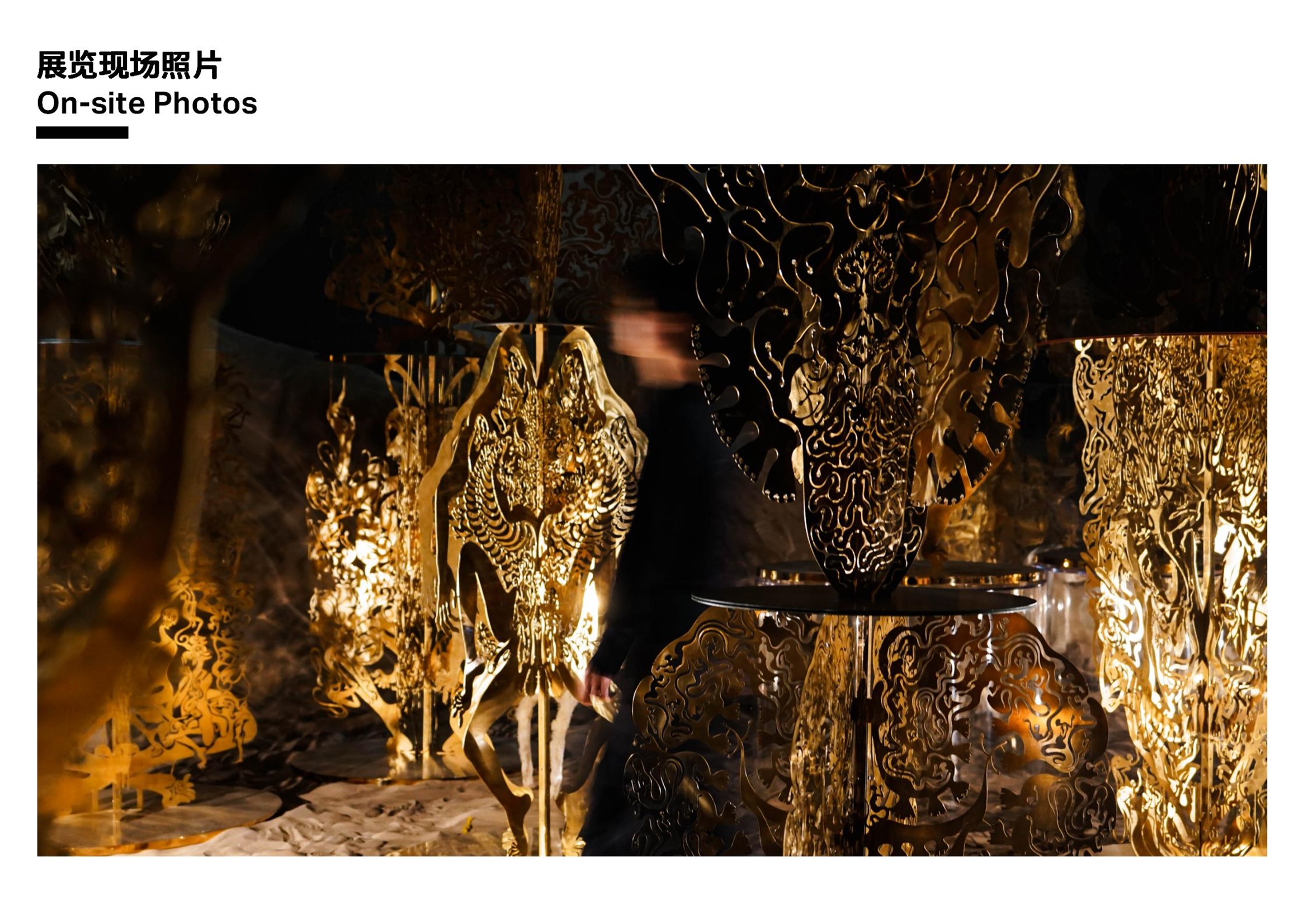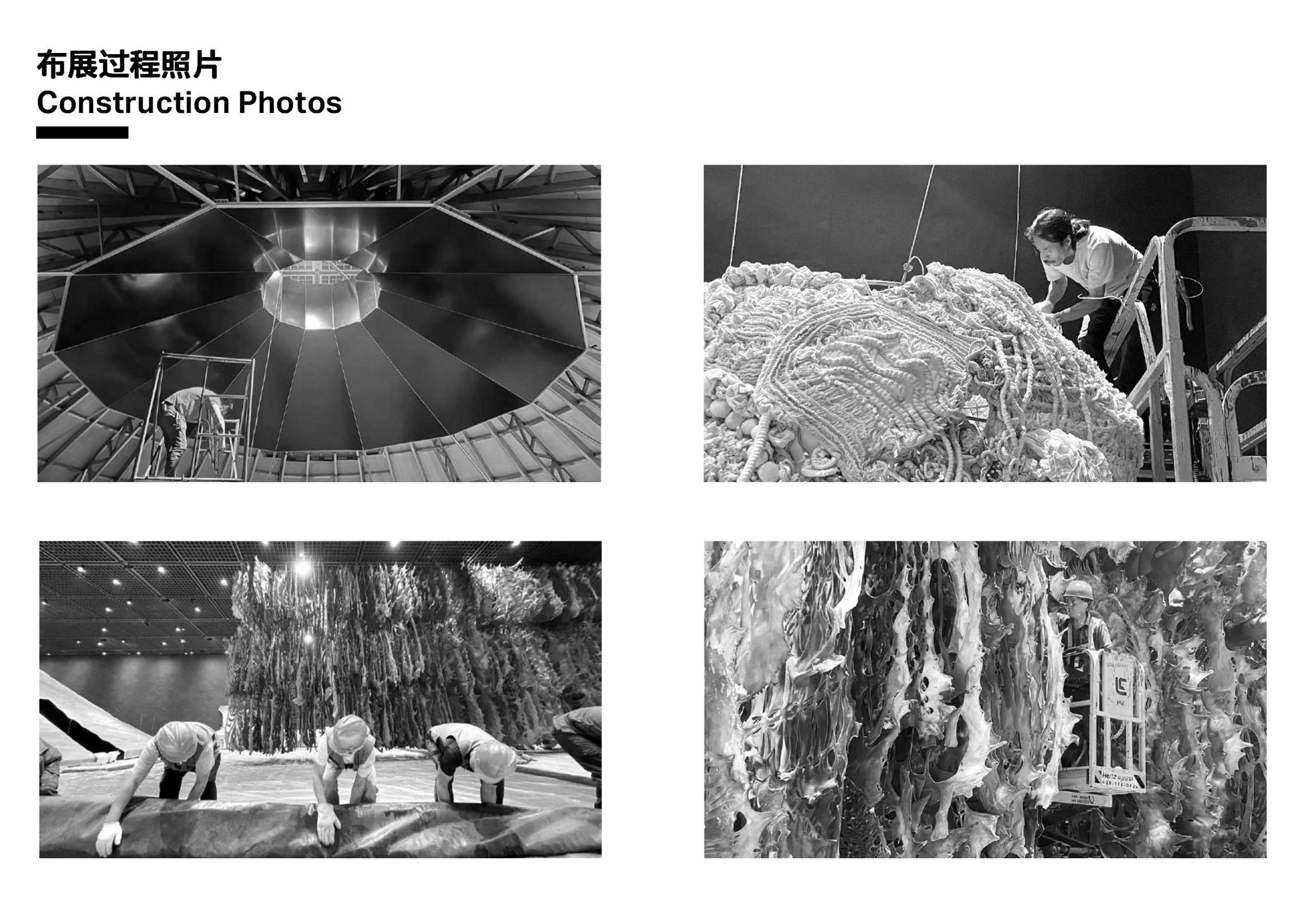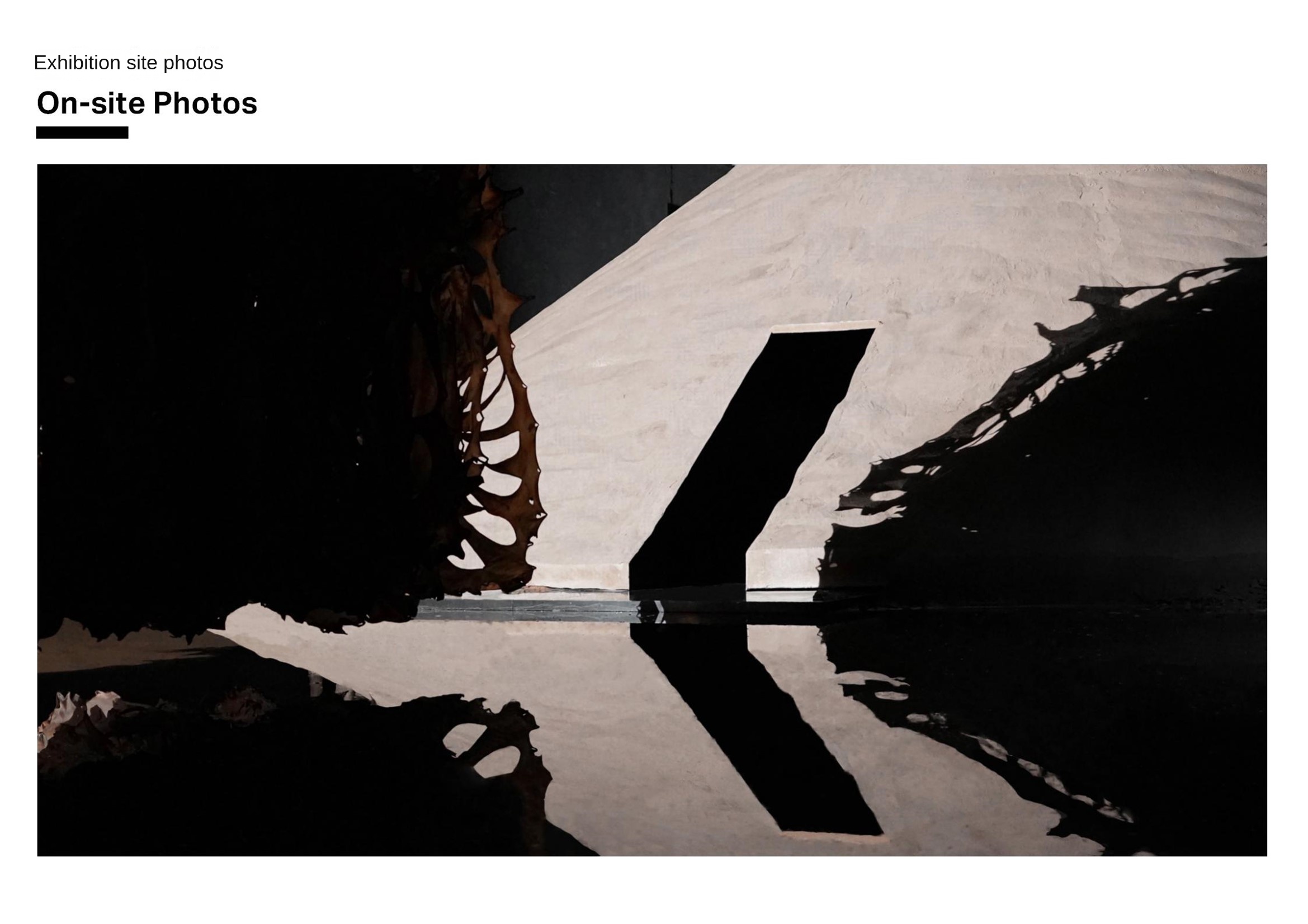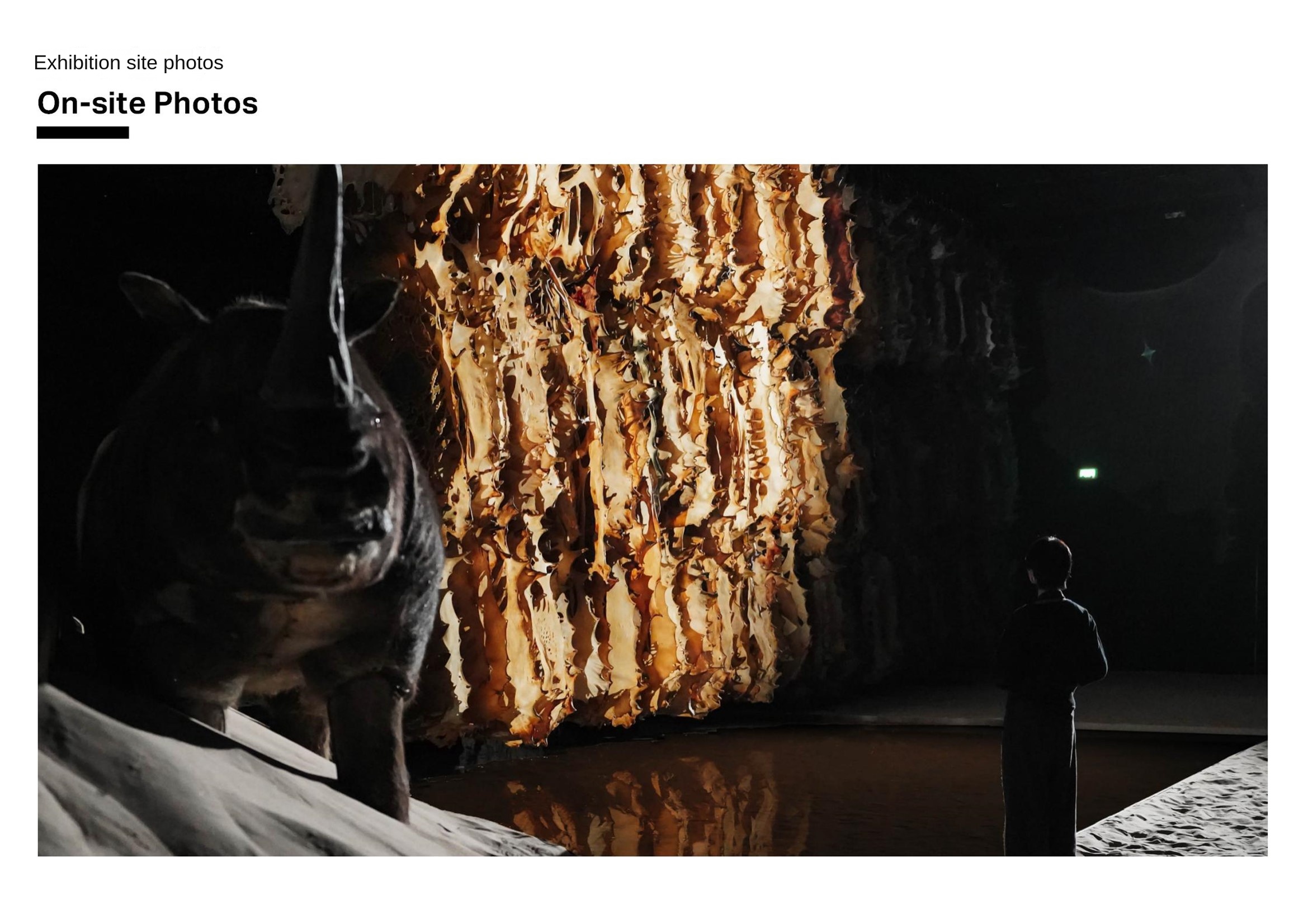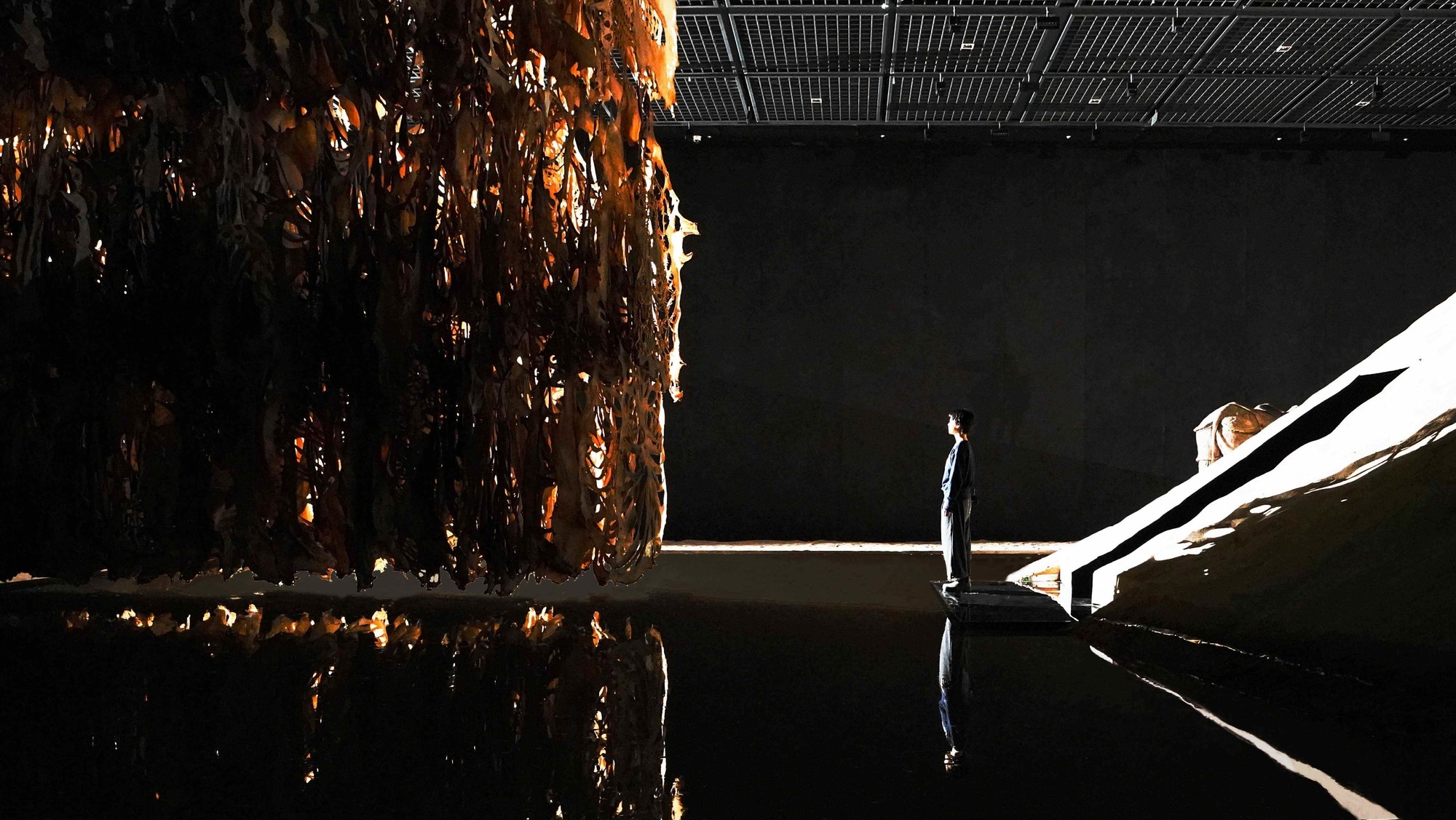
Wu Jian'an Solo Exhibition
PILLS was invited to design the space for "Wu Jian'an: The huge sand dunes are the bed of the sea", a large-scale solo exhibition held at the Silk Road International Art Exchange Center in September 2021. Wu Jian'an is an internationally renowned contemporary Chinese artist. We have created a surreal space within an exhibition hall of over 1,000 square meters, using elements such as sand dunes, a black ocean, mirrors, and the sun to create a dreamlike eternal cycle. The exhibition presents Wu Jian'an's large-scale installations, showing the peaks of his creations in recent years and sorting out the creative lineage systematically.

The Entrance “The Heaven of Nine Levels”
Entering the space, the first thing one encounters is the artist's signature piece “The Heaven of Nine Levels", a huge mirror that creates an alternative world, reflecting and conjuring reality and illusion. The undulating terrain obscures the paths and choices of travel, so one can either climb or step into it. Following the lead of the light, one can wander on the sandy ridges of the “Eternal Realm", or immerse in the mysterious cave amid the yellow sand. The changing light spills from above, rendering the boundaries indistinguishable while signaling the entrance to the “Black Sea ".
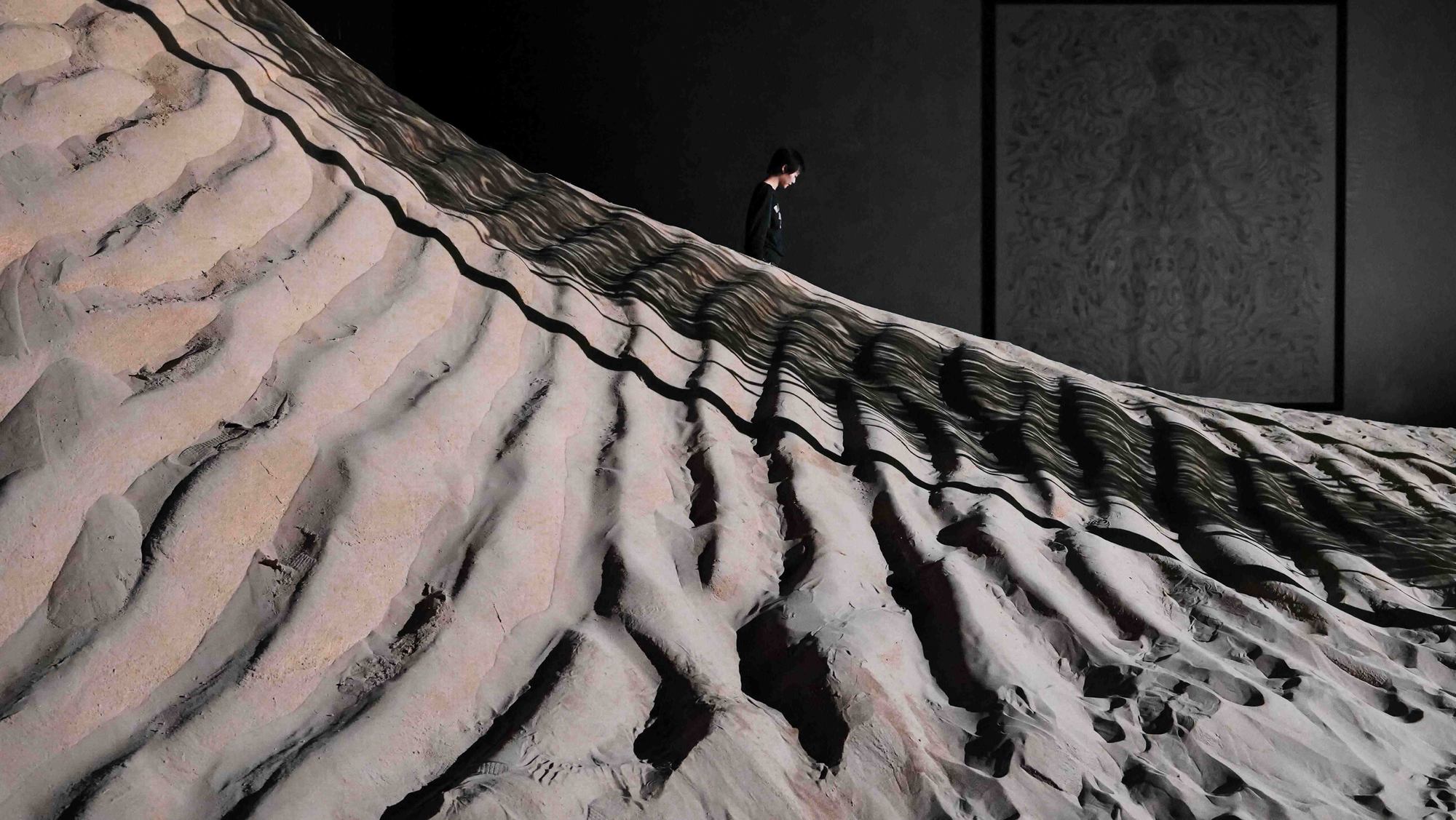
The Silhouettes of the Piece “Omen”
The footprints in the long stretches of sand are a testament to the viewers' dialogue with the world. As the feet sink deeper into the sand, the burning light shines across the dune, and the animal silhouettes of the piece “Omen" appear on the inked walls.

The Work “Plain Faces”
By passing the screen, the work “Plain Faces" is suspended above a black ink pool, forming a mirror image with the tranquil water, where the viewers encounter illusion and reality in space.
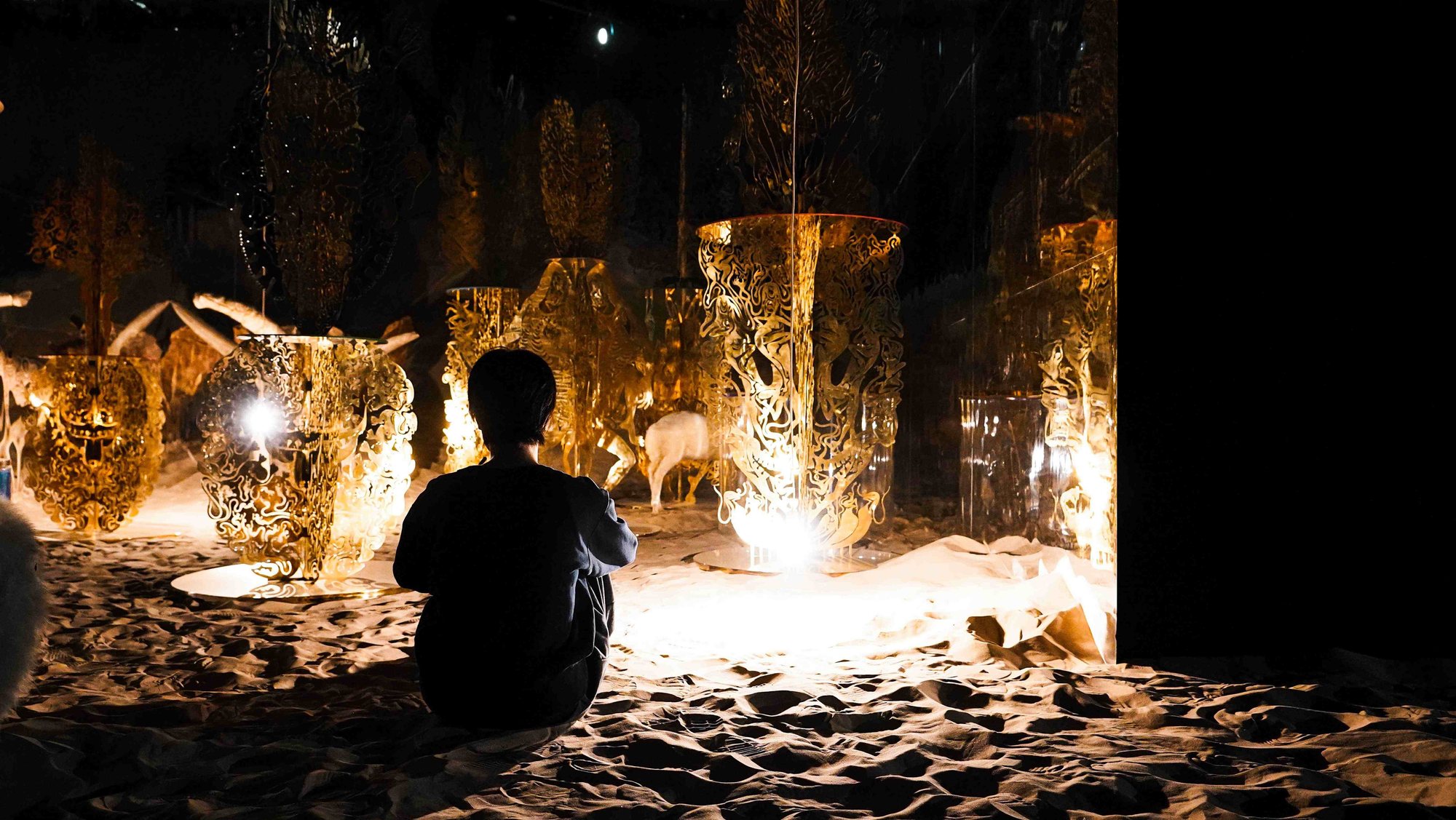
The Work “Daydream Forest Series"
At the end of the dream, behind the giant wall, there lies the secret “Mirror Jungle", a space enclosed by two parallel mirrors. The work “Daydream Forest Series" casts glittering light spots on the surrounding sand. These mental pieces with misty and illusory dreams are arrayed amid the star lights in the air. Stars and trees extend into a dream that cannot be awakened in the mirrored world.
Wu Jian'an Exhibition Space Design
Lighting Simulation
PILLS was invited to design the spatial experience for Wu Jian'an's solo exhibition “The Huge Sand Dunes are the Bed of the Sea” at Hebei's Silk Road International Art Exchange Center. Renowned for synthesizing diverse materials and media, Wu reinterprets ancient myths, totems, folk techniques, supernatural tales, and traditional narratives into works that transcend dimensions-from flat to three-dimensional, figurative to abstract-invoking collective memory and sparking universal reverie.
The exhibition features large-scale installations, with a surreal, immersive design that amplifies the artworks' cross-temporal and cross-cultural storytelling. At its core lies a 5m-high sand dune, crafted from real river sand, which guides visitors through a symbolic journey. Winding paths ascend the dune, leading through a mirrored “forest” to an abstract “black sea," evoking a voyage through myth and speculative antiquity. Two searchlights positioned diagonally alternate every minute, mimicking an artificial sun's rise and fall, casting shifting shadows that transform the space into a dynamic interplay of light and texture.
The surface of the dunes is covered with real river sand, and the walls are made of sustainable materials, approaching exhibition design in an environmentally conscious way while giving the audience a sense of returning to nature: between reality and myth, image and illusion, there lies the sea, and there lie the dunes.
The exhibition space of "The Huge Sand Dunes are the Bed of the Sea," designed by PILLS, seamlessly integrates with the artworks, presenting the artist's contemporary interpretation of traditional culture-ancient mythology, totems, and folk craftsmanship. It also reflects PILLS' profound contemplation of China's cultural heritage, environment, and social context. Departing from conventional exhibition formats, the design centers on the dune as a spatial element, merging China's natural landscapes, historical legacy, and modern artistic expressions into a narrative that transcends time and space.
In Chinese tradition, deserts are often linked to mythology, with dunes symbolizing historical accumulation and cultural transmission-an idea that aligns with Wu Jian'an's work. His creations evoke distant memories, recalling myths and totems, while acknowledging folk crafts and supernatural tales. The sculpted dunes guide visitors' movement, transforming the space into a bridge between the ancient and contemporary, the real and the imagined. The lighting design, inspired by Chinese philosophy, alternates between two spotlights, mirroring the natural rhythm of sunrise and sunset.
The choice of materials reflects an awareness of and a commitment to China's environment and sustainability. The walls are clad in reusable, recycled Xuan paper (traditional Chinese rice paper), while real river sand covers the dune surfaces. These elements not only enhance the immersive quality of the exhibition and evoke a sense of returning to nature but also serve as a reminder of the importance of environmental conservation and sustainable development.
Through spatial design, light, materials, and form, the exhibition creates an immersive experience that transcends artistic and cultural boundaries, showcasing Chinese design innovation while prompting reflection on environmental consciousness and cultural heritage.
Zigeng Wang is an Associate Professor and Deputy Head of the Department of Architecture at CAFA, where he also serves as Director of Media and Exhibition. As an international curator, he was appointed Curator of the China Pavilion at Expo Osaka 2025, Coordinator for the Circularity Special Project at Biennale Architettura 2025, and Chief Curator of the 9th Bi-City Biennale of Urbanism\Architecture. He holds a Master of Architecture from Princeton University and has been a Visiting Professor at Syracuse University's School of Architecture.
In 2018, Wang founded PILLS, an interdisciplinary studio exploring architecture, interior and exhibition design, urbanism, intermedia production. From installations to public buildings, cultural projects to commercial developments, PILLS critically engages with diverse design challenges, shaping contemporary discourse through innovative and adaptive approaches.







